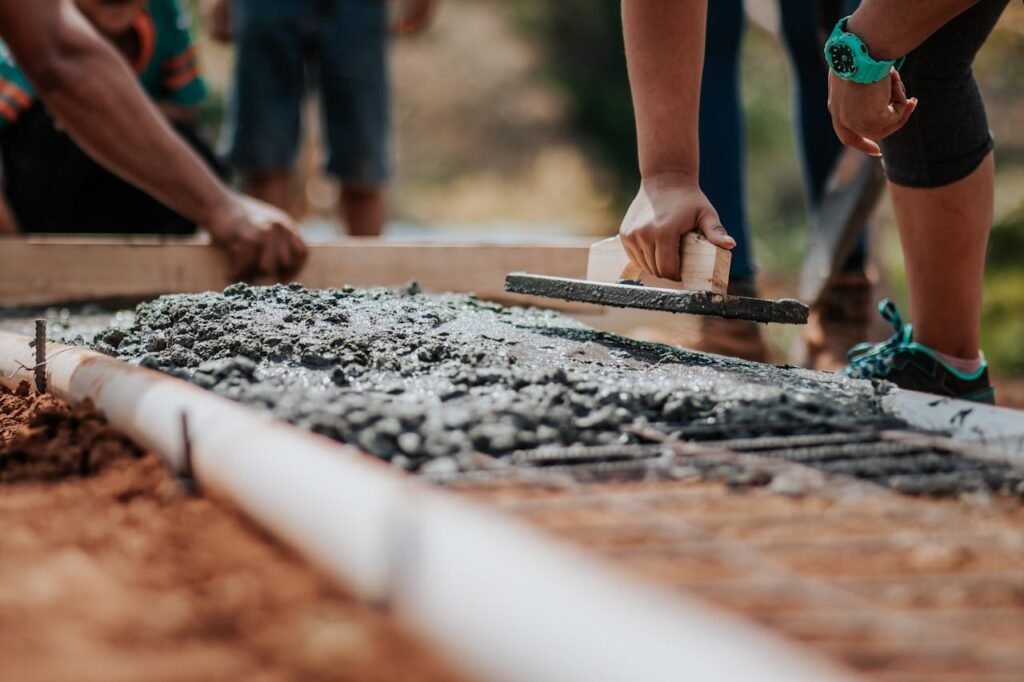- Service
Foundation Repair Springfield MA
Top-notch foundation repair in Springfield, MA: Our expert services ensure your home's stability. Contact us for a free inspection and reliable solutions!
Foundation Repair Services in Springfield, MA
The foundation of your home is its most essential structural component. It bears the weight of the entire structure and ensures its stability over time. Foundation issues, however, can develop due to several factors, such as soil conditions, water infiltration, and seasonal shifts in temperature. When you notice early signs of foundation problems, it's crucial to act quickly to avoid costly repairs and more significant damage.
At our Basement Waterproofing Springfield MA, we specialize in identifying and fixing the root causes of foundation issues. Our experienced team provides customized solutions for homeowners looking to restore their foundations to optimal strength and safety.

Signs of Foundation Problems to Look For
Foundation issues can present themselves in various ways. Recognizing these warning signs early can save you money and prevent extensive damage:
- Cracks in Walls or Floors: Small cracks may be natural over time, but larger cracks, especially those more than a quarter-inch wide, indicate possible foundation settlement or shifting.
- Uneven Floors: Sloping or uneven floors are often a result of a foundation settling. This can lead to further instability in the structure.
- Sticking Doors or Windows: If doors or windows become difficult to open or close, it may signal that your foundation has shifted, affecting the alignment of the frames.
- Water Leaks or Dampness: Persistent moisture or water seeping into your basement or crawl space is a major indicator of foundation issues. Water intrusion weakens the structure and encourages mold growth, which can further damage the foundation.
Why Timely Foundation Repair is Crucial
Ignoring foundation problems or delaying repairs can lead to severe consequences, including:
- Increased Repair Costs: Small cracks or shifting foundations can quickly worsen, leading to larger cracks and structural instability, which require more expensive repairs.
- Reduced Property Value: A compromised foundation significantly decreases your home’s market value, and potential buyers will often avoid homes with foundation issues.
- Safety Hazards: Foundation problems can lead to structural instability, making your home unsafe for you and your family. Prompt repairs can ensure the continued safety of your property.
Our Foundation Repair Process
We follow a straightforward and effective process to address foundation issues:
- Initial Consultation and Inspection:
We begin by offering a comprehensive inspection of your foundation. Our experts assess the severity of the problem and determine the best course of action to restore your foundation’s integrity. - Customized Repair Plan:
Every foundation is unique, so we provide a tailored repair plan based on the specific issues identified during the inspection. We offer solutions such as crack repair, piering, and wall stabilization to ensure long-term stability. - Efficient Repairs:
Our team uses advanced equipment and proven techniques to perform the necessary repairs. We aim to minimize disruption while efficiently addressing the root cause of the foundation problems. - Follow-up and Maintenance:
Once the repairs are completed, we provide maintenance tips to help prevent future foundation issues. We also offer warranties to ensure peace of mind after the repair process.
Common Foundation Repair Techniques
There are various methods available to address foundation issues, depending on the severity and nature of the damage:
- Crack Repair:
We use epoxy or polyurethane injections to seal foundation cracks. This helps restore the foundation’s strength and prevents water intrusion. - Piering and Underpinning:
When foundation settling occurs, piers are installed deep beneath the soil to lift and stabilize the foundation. This technique ensures that your foundation is securely positioned and level. - Wall Anchors:
For bowing or leaning foundation walls, we use wall anchors to straighten and reinforce the walls, restoring the structure’s stability. - Drainage Solutions:
Proper drainage is essential to prevent water from accumulating around the foundation. We install French drains, sump pumps, and other solutions to direct water away from the foundation and prevent further damage.
Preventing Future Foundation Issues
In addition to repairing existing damage, it’s essential to take proactive steps to protect your foundation in the future. Consider the following tips:
Ensure proper grading and landscaping around your home. Water should flow away from the foundation to prevent moisture from collecting
Control Moisture Levels
Installing a sump pump or dehumidifier in the basement can prevent moisture buildup, which is a leading cause of foundation deterioration.
Regular Inspections
Scheduling annual foundation inspections helps catch small problems before they escalate into significant issues.
Contact Us for a Free Foundation Repair Estimate
If you notice any signs of foundation damage, don’t wait! Contact us today for a free consultation and foundation inspection. We’ll help you identify any issues and provide effective, long-lasting solutions for your home. Call us at (959) 251-1629 or complete our online form to schedule your free inspection.
Why Choose Our Foundation Repair Services?
We offer flexible scheduling options to make it easy for our customers to get the plumbing services they need.
While maintaining the highest level of quality, we provide all of our plumbing services at reasonable prices.
We stand by our work and promise that all of our clients will be happy with the services we provide.
Our plumbers will arrive at your home quickly to identify the problem and begin working to resolve it.
- Customer Reviews
We are Honored to Have Won Our Clients
We take pride in gaining our customers’ trust and confidence by delivering outstanding service and unwavering dedication to excellence.
Home Owner
Home Owner
Protect Your Home with Expert Foundation Repairs
Your home’s foundation is critical to its safety and stability. Whether you’re dealing with cracks, moisture problems, or shifting walls, prompt foundation repair can protect your investment and provide peace of mind. Contact us today to schedule a consultation and ensure your home remains safe for years to come.

Let us take care of your basement needs.
Whether you're looking for a complete basement system upgrade, we're here to help.